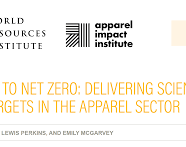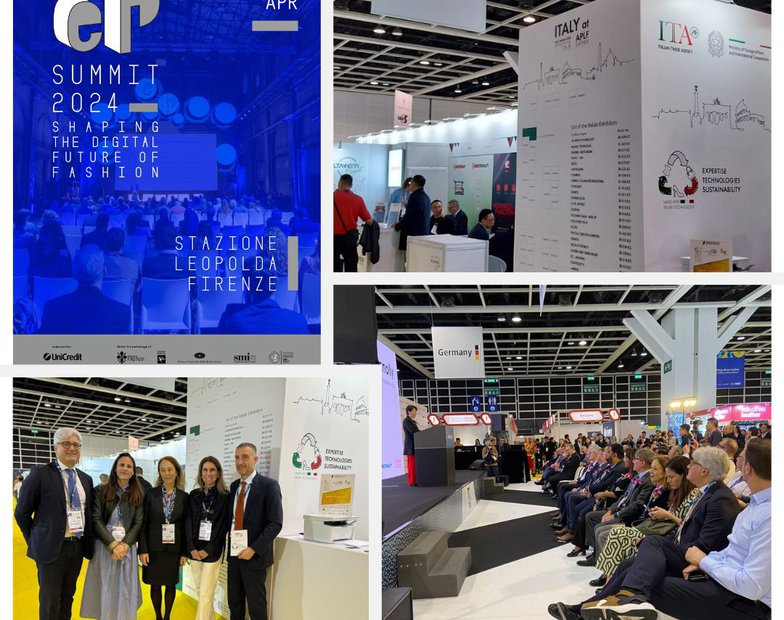The Roadmap to Net Zero report, published by the World Resources Institute and the Apparel Impact Institute, commented by Material Exchange. One of the main takeaways of the report is the estimated emissions produced by the fashion sector.
While the report shows that the apparel/footwear industry is actually not the second biggest polluter on the planet (as many have claimed), it still estimated the industry’s release of emissions at about 1.025 gigatons in 2019. How much is 1.025 gigatons exactly? Well, it’s equal to 102,500,000 metric tons, which is the amount of emissions released by 22,085,596 passenger vehicles driven for one year straight! The majority of those 1.025 gigatons comes from Tier II within the supply chain, i.e., fabric and material production.
The supply chain of fabric and material is a long and convoluted labyrinth with little information available around each step and what’s come before it. To get a handle on material production so that informed decisions can be made, transparency is required. The facts must be readily available to equip decision makers with the knowledge necessary to choose the best materials. Different brands prioritize different criteria around the materials they seek, but in today’s world of constant change, one thing that links all brands is the key factor of sustainability.
On this Earth Day 2022, the theme of which is Investing In Our Planet, we’re diving into the supply chain transparency issues that surround material sourcing – and what’s being done to change them.
Why does transparency matter?
Transparency has never been more important than it is today and plays a key role in how the material sourcing industry can contribute to preserving the Earth. End-consumers want to know the origins and path a piece of fabric has taken on its journey to the shelf of their favorite shop, and their buying choices are reflecting this concern.
In a survey conducted by Fashion Revolution in 2020, 69% of the 5,000 respondents said they would like to know how their clothes are manufactured (compared to 59% in 2018). Consumers also want to know where and under what conditions fabrics are made – and transparency can provide them with this information. While fast fashion is still going strong, there is a definitive shift toward being empowered to make more sustainable choices – and it’s bringing lots of questions to the table – questions from customers, brands, media, supply chain partners – any and all stakeholders.
So what does it take to provide answers to these questions? Given the fact that just one item of clothing can involve several manufacturing processes across multiple countries, getting the answers may feel impossible.
Tracking information is a key part of offering answers, with digital (or in some cases, still paper) trails that show due diligence has been taken. Weaving this process into existing workflows can be a challenge, to say the least – but there is help. Take, for instance, TextileGenesis, a traceability platform that’s customized to suit the needs of the fashion industry. The platform uses blockchain technology – which also backs cryptocurrencies like bitcoin – to create a permanent record of every stage of production.
The Open Apparel Registry (OAR) is another data tool which improves transparency by mapping garment facilities across the globe and assigning them each a unique ID for tracking purposes. All data entered into the OAR is processed by the tool’s algorithm and moderated by the OAR team to ensure quality and credibility. On the same token, we here at Material Exchange are working to gather data that shows the chain of custody across a fabric’s or material’s supply chain, enabling brands to work toward more measurable, responsible sourcing.
What transparency can do for your business
Whatever tool or service you choose for your business, transparency offers a number of benefits for those that embrace the concept. It’s easier to build both brand loyalty as well as strong business relationships with a transparent supply chain behind a product. Transparent businesses also gain a competitive advantage as they are seen as pioneers in the industry. This not only draws attention – it also increases employee satisfaction and attracts higher quality talent.
Brands across all markets are joining the movement of making sustainability pledges, committing to specified levels of improvement by targets set for 2 years, 5 years, 10 years into the future – and beyond. Perhaps it’s a resolution to use 50% of recycled materials in a clothing line, or to work toward zero-plastic and -synthetic fibers and materials (like nylon and polyester), replacing them with preferred materials. With accurate insights into what makes up the fabrics they’re using, brands are able to make good on their goals; instead of being lofty marketing plans, their sustainability commitments become achievable milestones that, in turn, make a business more reliable and encourage others to strive toward becoming transparent fashion brands as well.
Moving toward transparency
Transparency is about more than gaining insights into the clothing we’re producing – it’s a critical step in reducing the environmental and social impacts of the fashion industry and achieving set sustainability goals. As this year’s Earth Day theme states, “We need to act (boldly), innovate (broadly), and implement (equitably). It’s going to take all of us.” Investing in this planet is more important than ever before – and the apparel industry has a major part to play.
If you’re not already there, Material Exchange can help your business digitize its workflow, which is an important step in achieving transparency. You can find more details – or sign up – right here.
Getting on board for transparency, however it makes sense for your business, is a critical part of making the change our world needs. Accessible solutions exist for a more transparent, equitable, and just global fashion supply chain for the future of our world. Are you ready to take your business to the next level?



